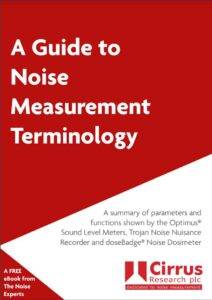What is the Difference Between Class and Type for Sound Level Meters?
The sound level meters and noise dosemeters that Cirrus manufactures are designed to meet the performance criteria laid down in various standards.
For example, the optimus sound level meters are designed to meet the requirements of BS EN 61672-1:2003 which is also known as IEC 61672-1:2002.
Within these standards there are many different performance criteria that the instrument must meet along with tolerances that are allowed. It may not be possible for the instrument to meet the exact requirements all of these criteria but as long as it is within the tolerances that is acceptable.
The older standards for sound level meters had different levels of tolerances with the tightest known as Type 0, with Type 1, Type 2 and Type 3 progressively looser in terms of the tolerances allowed. It is generally easier to make a measurement instrument meet wider tolerances and this is usually reflected in the price. A Type 1 sound level meter would usually have been more expensive than the equivalent Type 2 version.
Type 0 was often only used for very accurate laboratory standard instruments whereas Type 3 was considered potentially too inaccurate for use in any situation where measurements may need to be repeated.
For example, the 1989 Noise at Work Regulations specified that sound level meters should have met Type 2 or Type 1 of BS EN 60804.
When the new standard for sound level meters, IEC 61672, was developed, Type was replaced by Class and the levels of 0 and 3 were dropped (IEC 61672-1:2002 supersedes the previous standards IEC 60651 and IEC 60804 which have been withdrawn).
When the 2005 Control of Noise at Work Regulations were introduced, this new standard was introduced as the preferred option and so the requirement now reads:
“Your sound level meter should meet at least Class 2 of BS EN 61672-1:2003 (the current instrumentation standard for sound level meters), or at least Type 2 of BS EN 60804:2001 (the former standard)“.
In terms of accuracy, a Class 2 and Type 2 instrument are roughly equivalent and a Class 1 and Type 1 instrument are also roughly equivalent although there are technical differences in the standards. An instrument that was designed to meet the older standards may not be able of meeting the requirements of the new standard.
For more information, please call us on 0845 230 2434 in the UK or use the contact form on the right to send us an email.

Jaymee-lee Tolliday
Latest posts by Jaymee-lee Tolliday (see all)
- Turning Down the Volume: How the Trojan Noise Nuisance Recorder can help create a quieter world - 13th February 2024
- Festive Opening Hours 2023 - 6th December 2023
- Award of Excellence for Cloud-Based Monitoring Solutions 2023! - 20th November 2023

